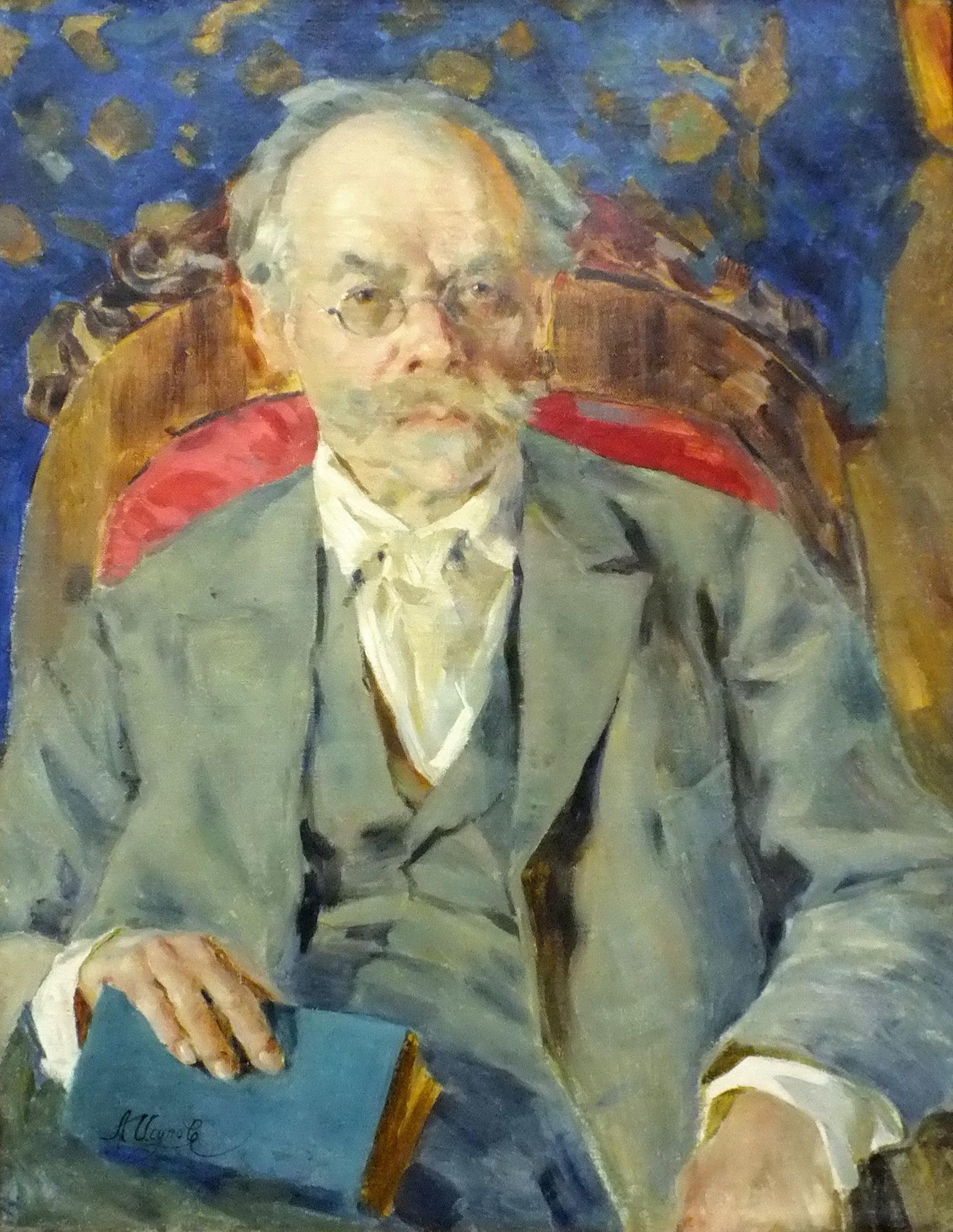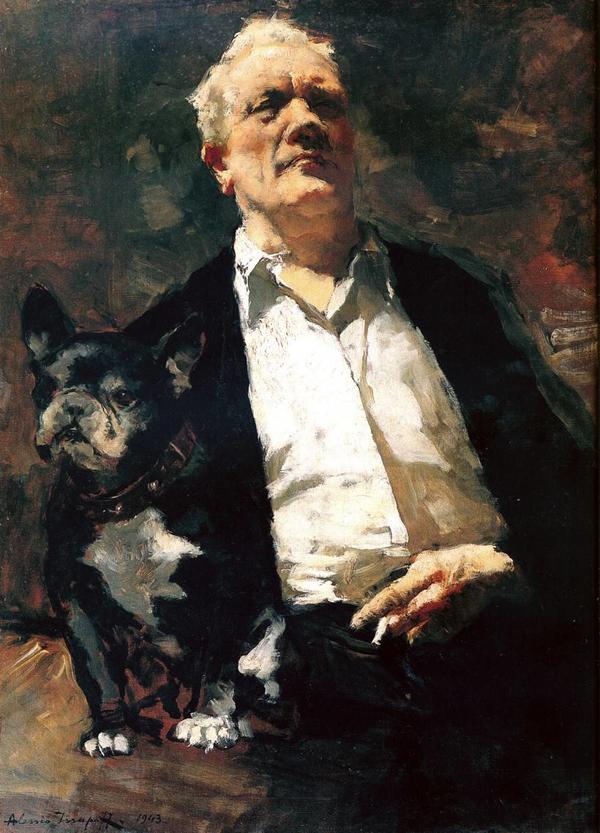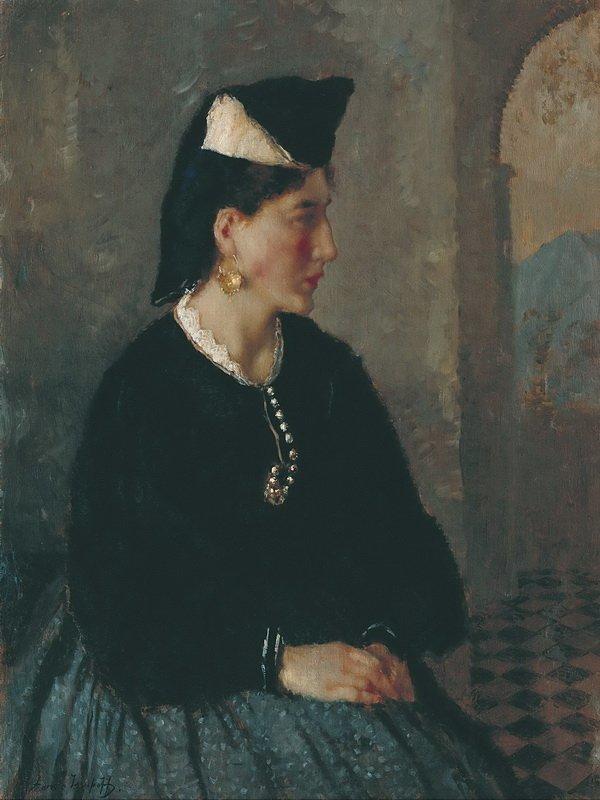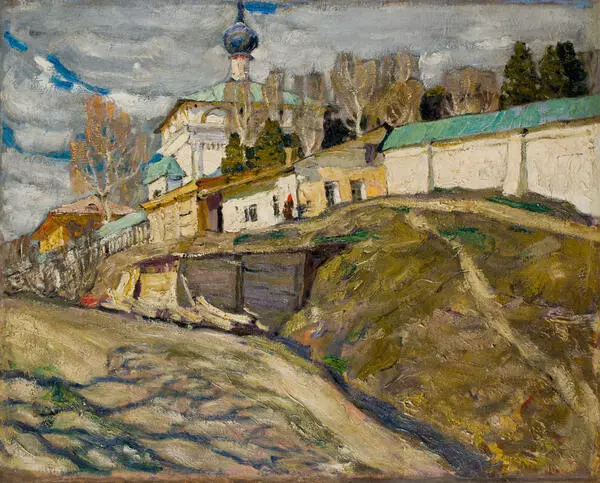Works by the artist Alexei Isupov are in the collections of major Russian and foreign museums. His self-portrait is represented in the Uffizi Gallery in Florence, among the self-portraits of other famous artists of the world. Isupov was a native of Vyatka (now Kirov), but he lived half of his life in Italy.
This portrait shows one of the first teachers of the future master – the landscape painter Nikolai Nikolaevich Khokhryakov. This work is an etude to the painting, which is located in the Khokhryakov Museum in Kirov. The painting was created while Isupov was in Vyatka, shortly before his departure to Italy in 1926.
By the time he left Russia, the artist had already been well known as a landscape painter. But in Rome his interest in the pure landscape genre was diminishing, and he got more involved in portraiture. Isupov painted female portraits most often than male ones, but self-portraits also played an important role, for example, the artist depicted himself as a circus artist, a gardener and a gambler.
At that time, the creative style of the artist changed. He began using brighter and more intense colors, tried to find a complex perspective, to depict nature in a more expressive way.
The artist developed his portrait drawing techniques in the lessons at the portrait and genre workshop of Valentin Serov and Konstantin Korovin. He attached great importance to contrast, play of light and shadow, and used the peculiarities of impressionist painting. The works created during this period are often built on the collision of black and white shades with all the richness of halftones and transitions, in which one can see a reference to works by Serov. However, his manner was also influenced by the Venetian painters.
In Italy his works of art were a great success, several newspapers wrote that his works became ‘a true revelation’ for the European audience.
This portrait shows one of the first teachers of the future master – the landscape painter Nikolai Nikolaevich Khokhryakov. This work is an etude to the painting, which is located in the Khokhryakov Museum in Kirov. The painting was created while Isupov was in Vyatka, shortly before his departure to Italy in 1926.
By the time he left Russia, the artist had already been well known as a landscape painter. But in Rome his interest in the pure landscape genre was diminishing, and he got more involved in portraiture. Isupov painted female portraits most often than male ones, but self-portraits also played an important role, for example, the artist depicted himself as a circus artist, a gardener and a gambler.
At that time, the creative style of the artist changed. He began using brighter and more intense colors, tried to find a complex perspective, to depict nature in a more expressive way.
The artist developed his portrait drawing techniques in the lessons at the portrait and genre workshop of Valentin Serov and Konstantin Korovin. He attached great importance to contrast, play of light and shadow, and used the peculiarities of impressionist painting. The works created during this period are often built on the collision of black and white shades with all the richness of halftones and transitions, in which one can see a reference to works by Serov. However, his manner was also influenced by the Venetian painters.
In Italy his works of art were a great success, several newspapers wrote that his works became ‘a true revelation’ for the European audience.











